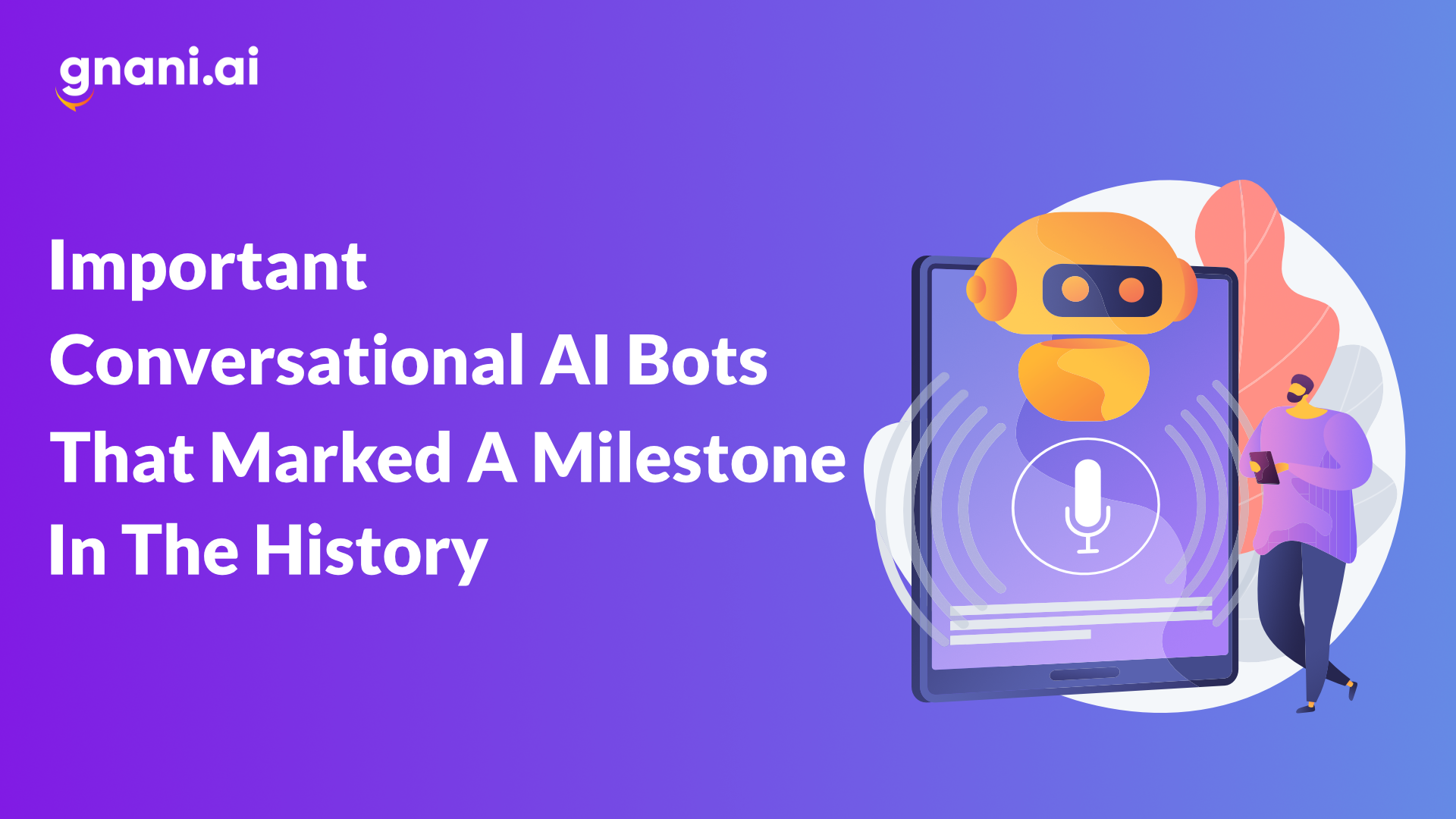The history of Conversational AI bots follows the same trends as other technological advancements. They developed gradually until the 90s, and then the new developments rolled out faster than ever seen in the annals of technological evolution. From the 2000s, there have been improvements in Conversational AI technology at a blink-and-miss pace.
One of the earliest people to think of Conversational AI was the great mathematician and cryptoanalyst, Alan Turing. In the 1950s, he wondered if a computer program could be developed to think like humans. He proposed a test called the Turing Test, to be used to decide if the computer has true ‘artificial intelligence.’
Early Attempts
The first truly successful conversational AI bots developed much later, but notable in history is ELIZA, the first ‘chatbot’, built in 1966. Joseph Weizenbaum made it according to a pattern matching and response selection scheme based on predetermined scripts. It simulated a conversation with a psychotherapist.
Though Weizenbaum did not believe AI could ever match human intelligence, this program spurred many efforts towards advancement. PARRY was the next significant attempt at constructing a program that simulated a patient with schizophrenia. These bots weren’t AI in the modern sense, though.
The First Real Chatbot
Jabberwacky was the first time one could properly say that AI was in use when Rollo Carpenter built it in 1988. It was based on contextual pattern matching to give responses drawing on previous conversations and depended on a spreadsheet-based language called Cleverscript. The drawback was that it was slow and could not handle many users.
The Real Jump in 2001
In 2001 came the predecessor of modern voice assistants, SmarterChild, a chatbot available on America Online (AOL) and Microsoft (MSN) messengers. It could accept queries from people and present information pulled from databases. It could update the weather, share prices, sports scores, etc. It was built by ActiveBuddy and may be considered the first successful Conversational AI bot.
Users remember Smarterchild as having a distinctive personality, and one article even compares it to Siri, Apple’s voice assistant. Microsoft later acquired the chatbot company and they shelved the project eventually.
The most successful conversational AI bots follow henceforth.
The OG Voicebot Siri
The idea of voice commands returning results in a natural human-like manner took hold, and in 2010, Apple released Siri. It uses machine learning and natural language processing. Siri and the counterparts from Google and Microsoft are now an integral part of smartphones, smart speakers, etc.
Siri’s integration into Apple’s messenger platforms makes it possible for users to exchange image, video, and audio files. It can perform essential functions like calling contacts and internet searches. As users make more requests, Siri gathers the data and grows more ‘intelligent’, adapting to their tastes.
Siri has issues in its functioning, like the limited capacity to handle non-English languages and does not recognize accented voices well. With the recent updates, SIRI can now understand English + another language. For Instance, you can say “Hey Siri, play a canción romantica,” it can play the song of your choice.
IBM Watson
Created by IBM in 2011, Watson was good enough to win against two champions of the quizzing contest Jeopardy. Watson has evolved since then and is now well-known for the healthcare functions developed. It is now Watson Assistant for Industry, and people can build their own specialized versions.
The Latest Conversational AI Agents
Of note are Google Assistant and Microsoft Cortana. Google Assistant is the answer to Siri and integrates with all computational devices and even its home automation products, including smart speakers. The major complaint is the lack of personality. Microsoft Cortana as an assistant can carry out many tasks like chatting with people, sending emails, reminders, getting information, playing games, etc.
Voicebots and chatbots are now being built by numerous companies of varying sizes to cater to an increasingly large market, which may be worth $7 Billion by 2025. The rise of social media platforms and the ability to integrate these conversational AI agents with them and websites, besides messaging platforms like Whatsapp, is also a significant factor.
In less than 5-7 years, voicebot technology has evolved tremendously. They sound very human-like, and the ability to sense sentiments and context is improving by leaps and bounds. The demand for these agents globally has increased the range of languages they can handle, with Gnani.ai’s bots capable of communicating in 20+ languages. As a topping, assist365™ low-code AI bot builder lets you create your own Conversational AI bot and deploy it in no time.
With more datasets being generated and AI technology being refined, these modern virtual assistants will become more efficient than ever. They will become better at handling more complex tasks. They are already indispensable to contact centers and other departments in customer-facing industries.


